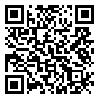Volume 29, Issue 3 (10-2023)
Back to this Issue |
Back to browse issues page
Download citation:
BibTeX | RIS | EndNote | Medlars | ProCite | Reference Manager | RefWorks
Send citation to:



BibTeX | RIS | EndNote | Medlars | ProCite | Reference Manager | RefWorks
Send citation to:
Jalal Razaghi N, Hajimiri K, Hashemiparast M. Exploring the determinants of childbearing decision-making among women and men of reproductive age: A qualitative study. Journal of Hayat 2023; 29 (3) :260-280
URL: http://hayat.tums.ac.ir/article-1-4981-en.html
URL: http://hayat.tums.ac.ir/article-1-4981-en.html
1- Dept. of Health Education and Promotion, School of Public Health, Zanjan University of Medical Sciences, Zanjan, Iran
2- Social Determinants of Health Research Center, Zanjan University of Medical Sciences, Zanjan, Iran
3- Social Determinants of Health Research Center, Zanjan University of Medical Sciences, Zanjan, Iran ,minahashemiparast@gmail.com
2- Social Determinants of Health Research Center, Zanjan University of Medical Sciences, Zanjan, Iran
3- Social Determinants of Health Research Center, Zanjan University of Medical Sciences, Zanjan, Iran ,
Abstract: (2009 Views)
Background & Aim: In recent years, significant changes have occurred in the dynamics of childbearing within familial context. Notably, Iranian families have witnessed a noticeable decline in the desire for childbearing and having additional children. The aim of this study was to explore the determinants of childbearing decision-making among women and men of reproductive age.
Methods & Materials: This study adopts a qualitative research design using the conventional content analysis approach in 2023. The participants comprised 19 married women and men of reproductive age living in Zanjan, who were purposively selected to ensure maximum variation. After obtaining informed consent, the participants were invited to participate in individual, semi-structured interviews. Data collection continued until data saturation was reached, with concurrent analysis conducted throughout the process. The textual data were managed using MAXQDA software, version 2020.
Results: Throughout the inductive data analysis process, seven main categories emerged as determinants of decision-making about childbearing. These categories included social role modeling, reflection within family structure, social and economic requirements, contemporary concerns in parenting, avoidance of responsibility and comfort-seeking, unpleasant past experiences and age-related challenges. Among these categories, social and economic requirements emerged as the most prevalent concept across all interviews, with a total of 505 open codes associated with this category.
Conclusion: The normalization of reduced childbearing rates within the society, accompanied by shifting values and attitudes towards the significance of children, as well as economic and social problems have contributed to an increasing preference for smaller families. Furthermore, the desire for fewer children can be viewed as a response to the individualistic tendencies of women and men, as well as a means of avoiding parenting concerns.
Methods & Materials: This study adopts a qualitative research design using the conventional content analysis approach in 2023. The participants comprised 19 married women and men of reproductive age living in Zanjan, who were purposively selected to ensure maximum variation. After obtaining informed consent, the participants were invited to participate in individual, semi-structured interviews. Data collection continued until data saturation was reached, with concurrent analysis conducted throughout the process. The textual data were managed using MAXQDA software, version 2020.
Results: Throughout the inductive data analysis process, seven main categories emerged as determinants of decision-making about childbearing. These categories included social role modeling, reflection within family structure, social and economic requirements, contemporary concerns in parenting, avoidance of responsibility and comfort-seeking, unpleasant past experiences and age-related challenges. Among these categories, social and economic requirements emerged as the most prevalent concept across all interviews, with a total of 505 open codes associated with this category.
Conclusion: The normalization of reduced childbearing rates within the society, accompanied by shifting values and attitudes towards the significance of children, as well as economic and social problems have contributed to an increasing preference for smaller families. Furthermore, the desire for fewer children can be viewed as a response to the individualistic tendencies of women and men, as well as a means of avoiding parenting concerns.
Send email to the article author
| Rights and permissions | |
 |
This work is licensed under a Creative Commons Attribution-NonCommercial 4.0 International License. |






